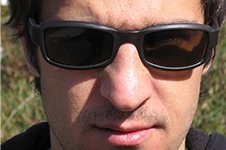Search
To search for an exact match, type the word or phrase you want in quotation marks.
A*DESK has been offering since 2002 contents about criticism and contemporary art. A*DESK has become consolidated thanks to all those who have believed in the project, all those who have followed us, debating, participating and collaborating. Many people have collaborated with A*DESK, and continue to do so. Their efforts, knowledge and belief in the project are what make it grow internationally. At A*DESK we have also generated work for over one hundred professionals in culture, from small collaborations with reviews and classes, to more prolonged and intense collaborations.
At A*DESK we believe in the need for free and universal access to culture and knowledge. We want to carry on being independent, remaining open to more ideas and opinions. If you believe in A*DESK, we need your backing to be able to continue. You can now participate in the project by supporting it. You can choose how much you want to contribute to the project.
You can decide how much you want to bring to the project.

The 55th International Exhibition of the Venice Biennale, curated by Massimiliano Gioni, has as its title “The Encyclopaedic Palace”. Gioni’s career of biennales seems in sync with the topics he chooses, and it seems coherent to verify this emerging trend, since “pathos” of Manifesta 5 in San Sebastián (2004), and even more so that “of mice and men” of the Berlin Biennale (2006).
This Venice Biennale recounts a dark underworld of rituals and mystic visions under the auspices of the prophetic gaze of two figures; at the beginning, in the Arsenale, is presented the maquette of the encyclopaedic palace, designed by the self-taught artist Marino Auriti, who in 1955 conceived of a museum-like architecture that pursued the impossible dream of gathering within its walls all the knowledge of the universe. Presented in the central pavilion, in the form of a curatorial declaration, is The Red Book by Carl Gustav Jung, an illustrated manuscript that presents different fantasies and on which the founder of analytical psychology worked for sixteen years. With these points of departure it’s not surprising that the thread underlying the whole exhibition is one that extols the power of individual and collective cosmologies.
It’s worth asking about the great acceptance of cosmic and esoteric discourses in recent contemporary art, which has no problem digesting non-contemporary art realised by outsiders or artists from other times, as occurs in this exhibition. One look at the anxiety that our late capitalism disinters could justify this return to cosmogonies. It’s not an isolated case and equally one can’t relate this cosmological revival with the past. Even young artists today seem drawn to psycho-magic and tarot cards. In the best of cases, the aesthetics employed are those of vintage collage, in black and white, or everything that has a whiff of passé science fiction.
However, it’s very hard to talk today of cosmogonies without falling into its reactionary side, its mystical and transcendental language. This tendency was already identifiable in dOCUMENTA (13) this leaning towards the New Age, and the Venice Biennale only confirms the invasion of dead languages presented in cabinets of curiosities. Many are the artists and many the exceptions, but what is really interesting is establishing the dominant discourse that stands out. There are spectators who are wowed with the display of the eccentricity and pure creativity that pours directly from the head and there are even those who celebrate it. But it’s worth at least asking if this whole return to the inner psyche doesn’t hide a new expressionism, of which the decade of 1980 left us only with its postmodern and spectacular appropriation. From the psyche one reaches the human body, and Cindy Sherman has curated part of the exhibition in a manner that is closely related to her work and post-human influences. The 80s and the 90s are well represented. And with it pain, a lot of pain.
The disjointed and happenstance annotation of terms explaining the works of “The Encyclopaedic Palace” state: ghostly eccentricity; rituals, myths; parapsychology, belief systems; darkness; mystery and the irrational; telepathy; extrasensory perception; visions; spiritualism; tribalism; occultism; phantasmagoria; naïf; visionary; mysticism; Art Brut; new kitsch; burlesque; folklore; psychiatry; religions; psychodrama; palmistry; ecstasy; mise-en-scenes; sexuality; tarot… Don’t begin to think that with the sum of all these words one obtains a photo-fit of Gioni. How could it? It’s nothing more than a differentiating choice of discourse when constructing curatorial authorship (authority).
The other underlying thematic axis in the exhibition would be not that of the encyclopaedia, so much as the way artists think about totality. This becomes more clearly defined when it becomes a subject to be illustrated, rather than a thought system that emanates directly from the curating. The totality is always abstract, and as such cannot be represented, so art works give us clues to this very totality. This exhibition seems to want to reduce this totality exclusively to the inner worlds of the imagination, while at the same time we lose our minds in this other totality called capitalism, the world-system or globalization.

Peio Aguirre writes about art, film, music, theory, architecture and politics, amongst other subjects. The genres he works in are the essay and meta-commentary, a hybrid space that fuses disciplines on a higher level of interpretation. He also (occasionally) curates and performs other tasks. He writes on the blog “Crítica y metacomentario” (Criticism and metacommentary).
"A desk is a dangerous place from which to watch the world" (John Le Carré)